
THE ACTION OF MUSCLES
Large and only weight bearing component of crus (stifle/ knee) Large tibial tuberosity - patellar ligament Medial tibia is subcutaneous Cochlea is inclined craniolaterally. This causes the lower limb to move laterally on flexion Fibula is greatly reduced Distally incorporated into tibia Proximally tightly articulated with tibia It has a short shaft
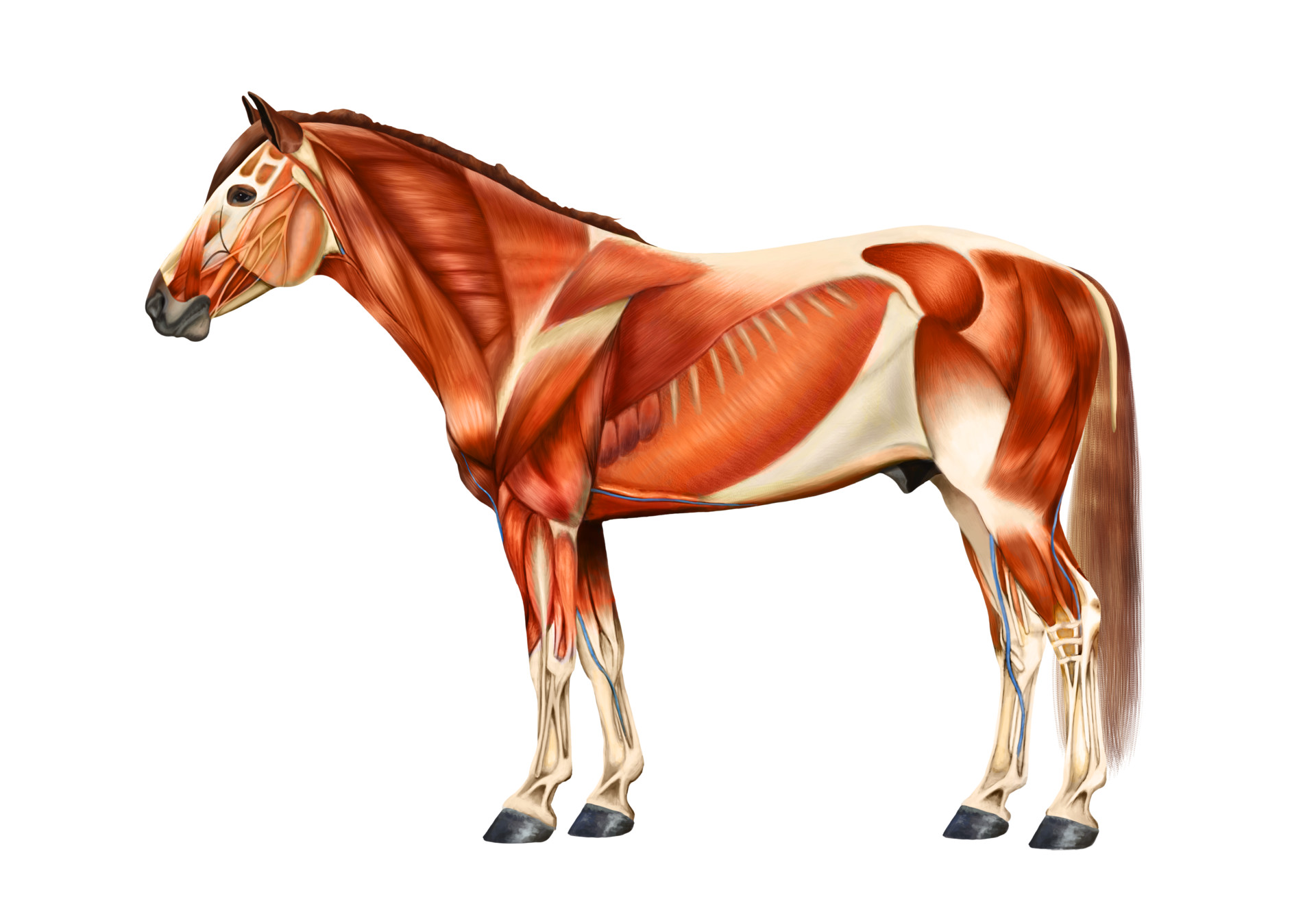
ArtStation Horse muscle anatomy
Wing of atlas and mastoid process of temporal bone. Elevates head and neck. Bends head and neck laterally. Stabilizes and extends vertebral column. Dorsal branch of local spinal nerve. M. Semispinalis capitis. Articular processes of C2/3-7 and transverse processes of T1-6/7. Occipital bone. Elevates head and neck.
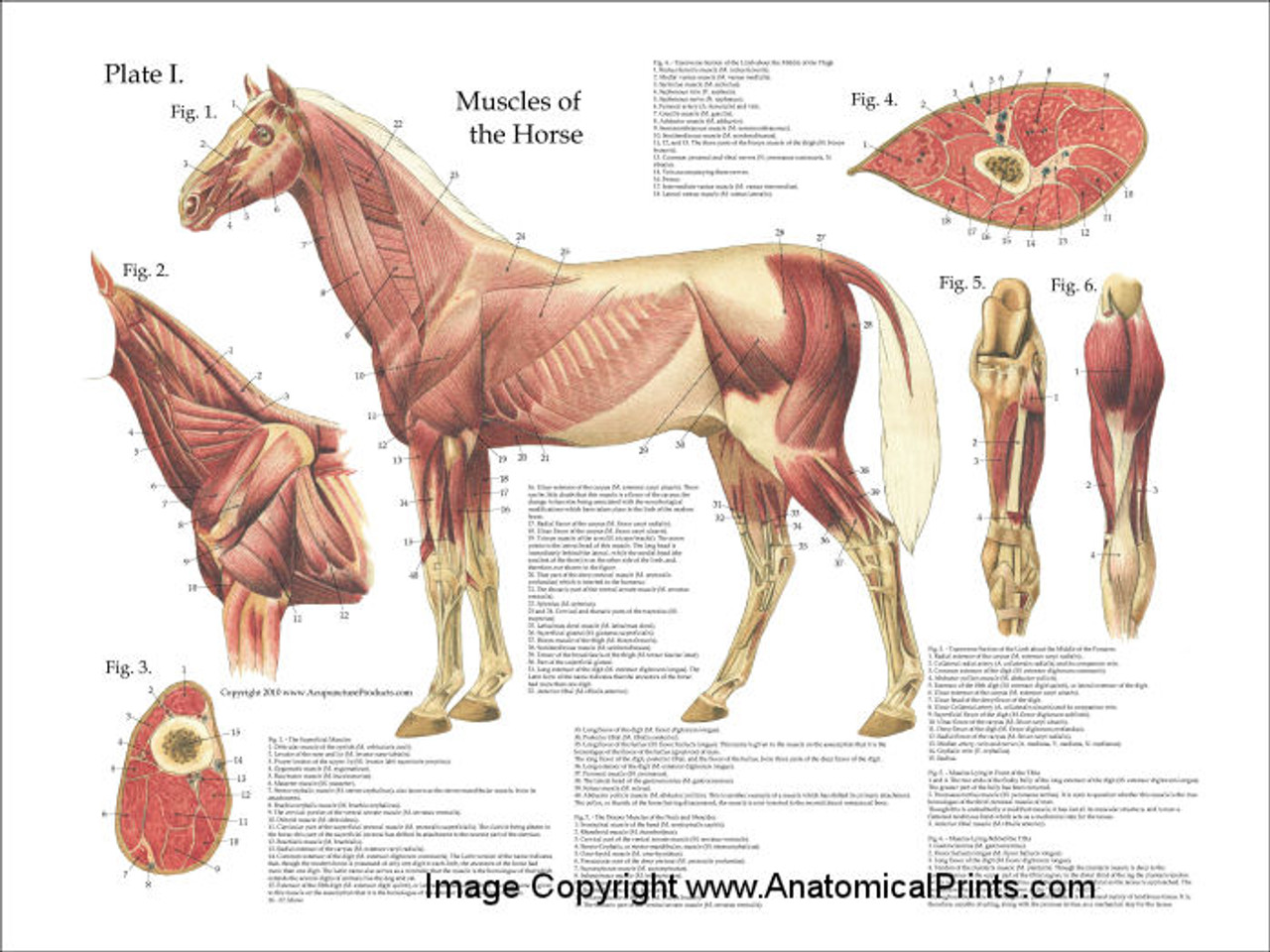
Horse Muscular System Poster Clinical Charts and Supplies
Equine anatomy encompasses the gross and microscopic anatomy of horses, ponies and other equids, including donkeys, mules and zebras.
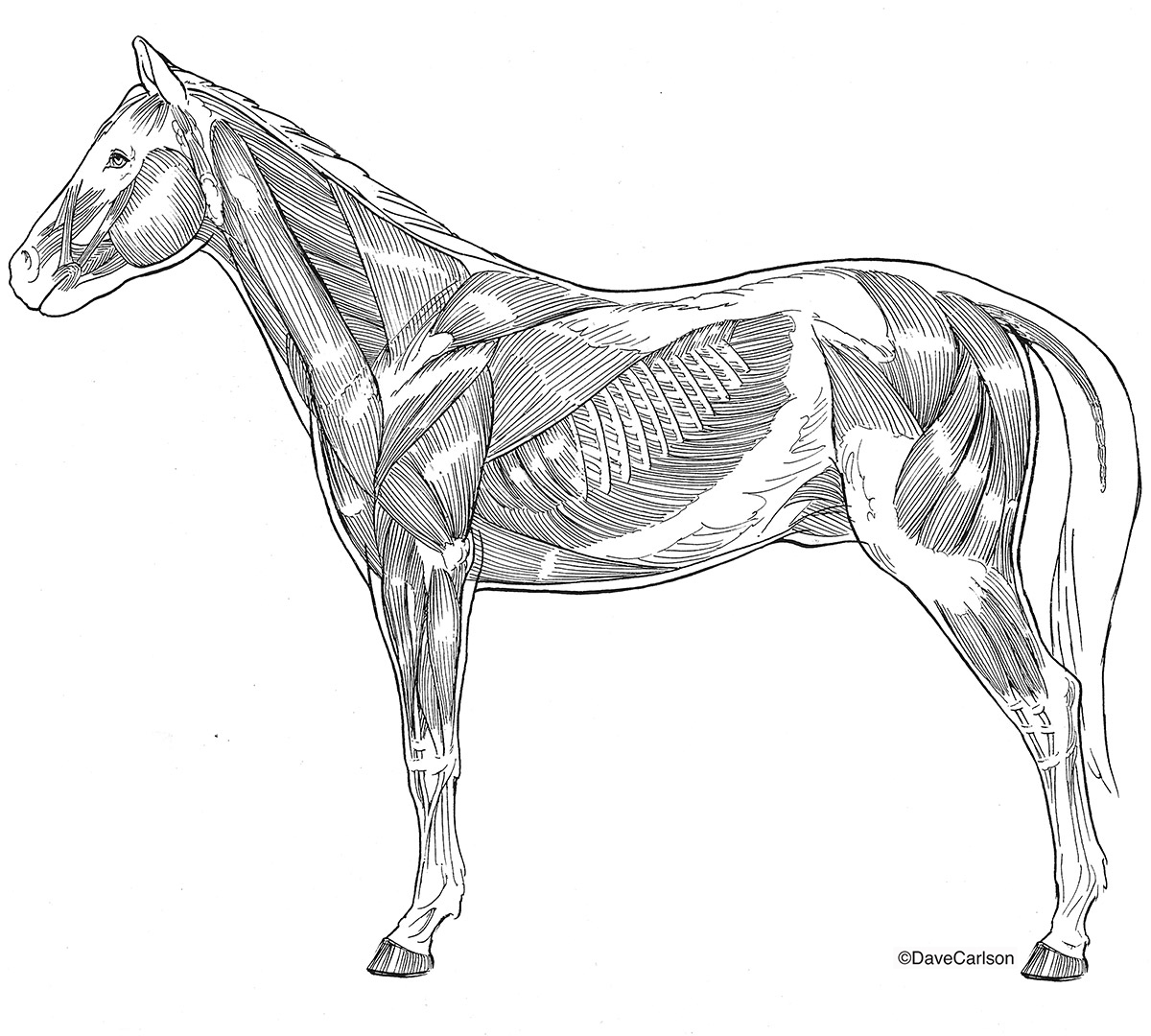
Horse / Equine Superficial Muscles Carlson Stock Art
Horse Anatomy and Muscle Diagrams - stretchyourhorse 70% OFF! 25 VIDEO TUTORIAL COLLECTION Horse Anatomy and Muscle Diagrams This page contains color coded pictures of the horse's deep, superficial and hind end muscles. The pictures will help you "see" which muscles you are stretching!

Superficial Front Limb & Neck Muscles, Front View Horse anatomy, Horse care, Horses
The longissimus dorsi, is the main muscle in the horse's back and underneath the saddle. However, it is not just local to this area. The longissimus dorsi starts at the 4th neck vertebra and and attached into the sacrum in the hind quarters. Branches of the longissimus dorsi also connect to the head and tail.

A4 Veterinary Poster Muscles of the Horse (Animal Anatomy Picture Pathology) Equine
Dr Christin Finn, DVM, CVA details the underlying skeleton and muscle structure of a horse by using a live painted horse Find more information about your hor.

Equine deep musculature anatomy chart Horse anatomy, Equine veterinary, Muscle anatomy
A muscle or muscles and its/their tendon (s) that operate together to cause flexion or extension of a joint are referred to respectively as a flexor unit and an extensor unit. Smooth: muscle which makes up automatic systems (digestive system, for example)
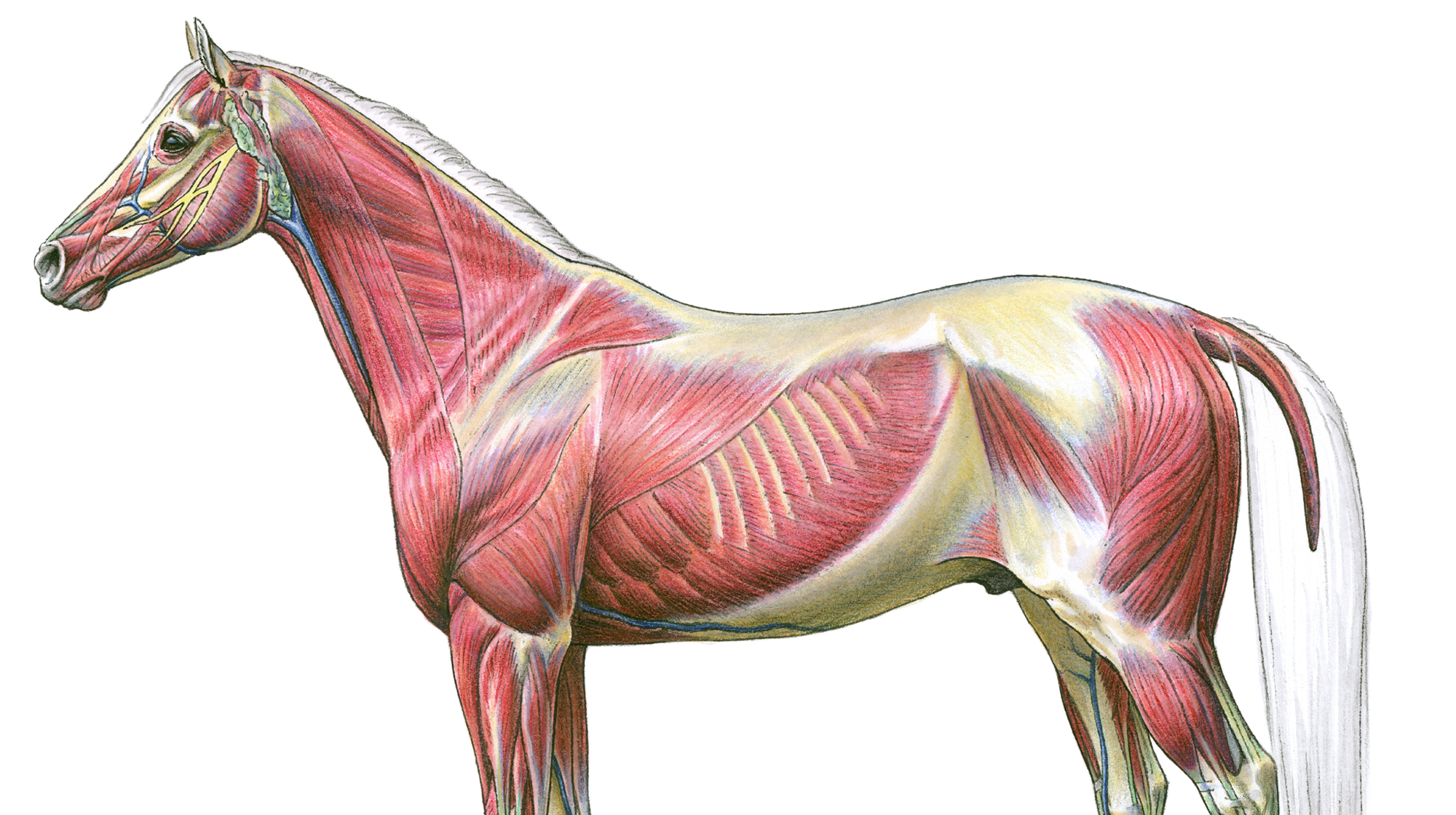
Equine Muscles & Tendons
The horse's musculoskeletal system consists of the bones, cartilage, muscles, ligaments, and tendons. Their primary function is to support of the body, provide motion, and protect vital organs. There are 205 bones in the horse's skeleton.
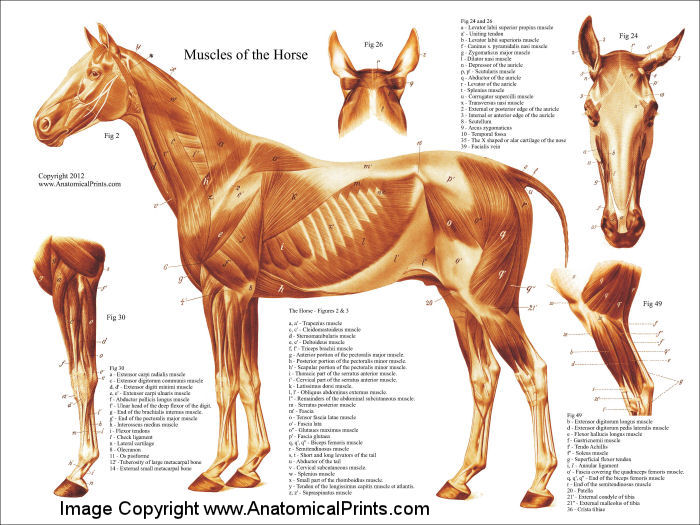
Horse Muscular Anatomy Poster
Jan 5, 2021 4 min read The Equine Muscular System The muscles of the body are responsible for creating movement whether it be via the skeletal muscle, smooth muscle, or cardiac muscle. Agonist muscles contract and are the primary mover.
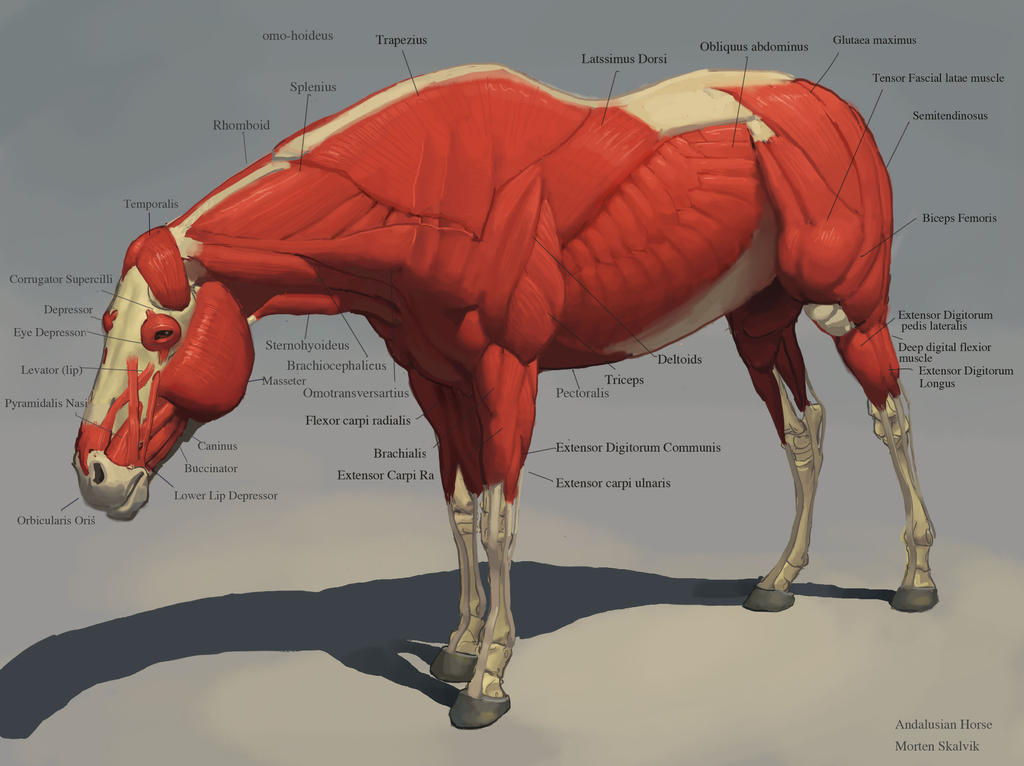
Horse Muscles by awesomeplex on DeviantArt
1 h 30 Online learning What you will learn In this course you will learn about the position and the function of some of the most important muscles and tendons of the horse's locomotory system, including: The most important muscles of the horse's neck and trunk The most important muscles of the horses fore- and hindlimbs

animal muscles Cerca con Google Anatomie, Pferd, Reiten
Anatomy of the Equine Skeleton. The horse skeleton consists of 200 different bones in the head, body, and legs. On the inside, every horse has the same horse parts, from the bone structure to the ligaments and horse muscles. But the size and look of the outer system can vary by equine race and gender. Horse Head
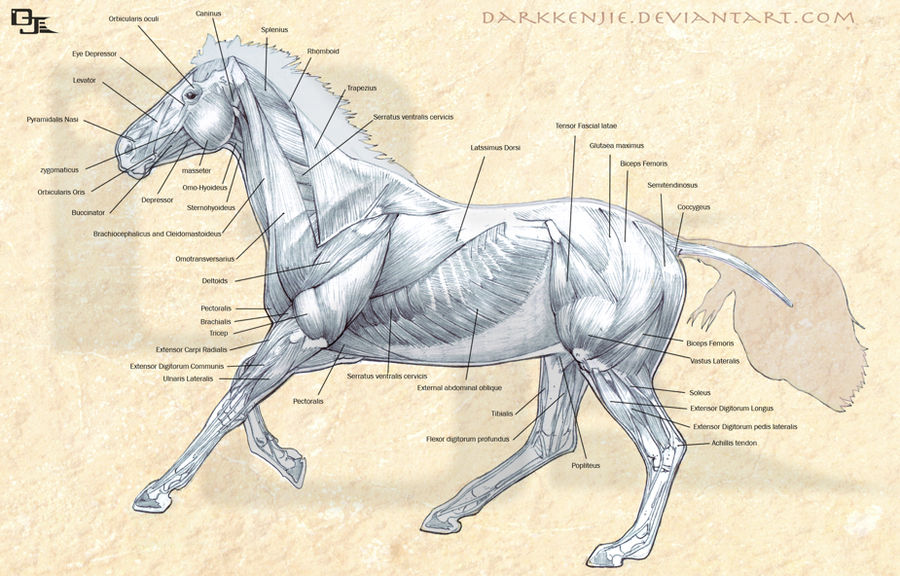
Horse Muscles Anatomy by DjWelch on DeviantArt
Muscles are tissues in your horse's body that allow your horse to walk, gallop, jump, and canter. In essence, horse muscles are the foundation of all movement, so it's key that you learn how to maintain animal muscle health if you want your horse to live his best life. Unfortunately, horses can develop muscle diseases known as myopathies.

Training Your Horse from the Anatomical Perspective. Part 2 Engagement
Croup and tail Horse skin and its products Summary While analyzing each part of the horse's body, we will also speak of the exterior - namely, the conformation, which depends on the horse's type and race. In this article, we will also speak about the horse's skeleton and muscles.
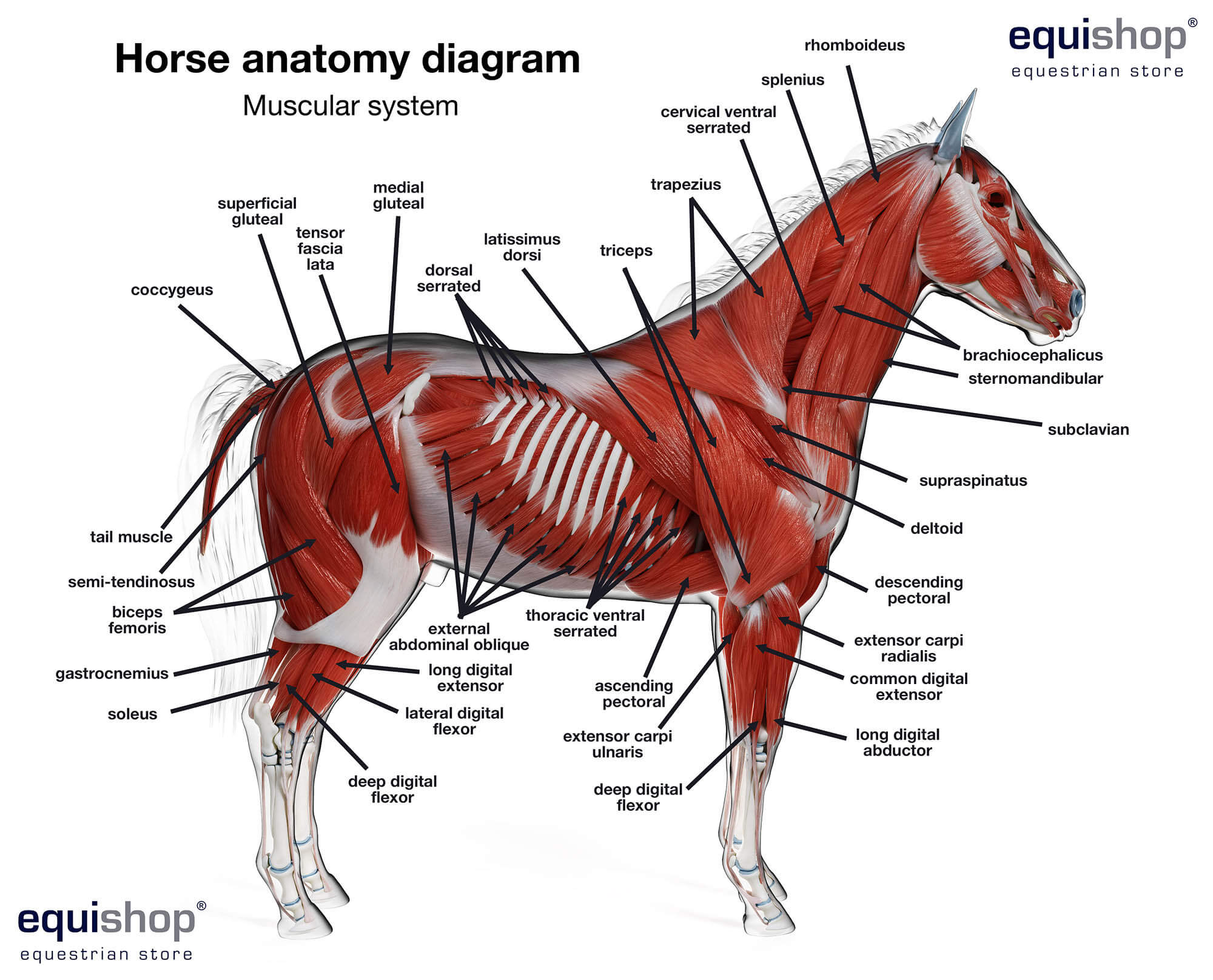
Anatomía del caballo diagramas de las partes del cuerpo del caballo Tienda Ecuestre
Horse Council . Title: Equine Anatomy Author: Essie Rogers Created Date: 12/28/2009 10:47:06 AM.
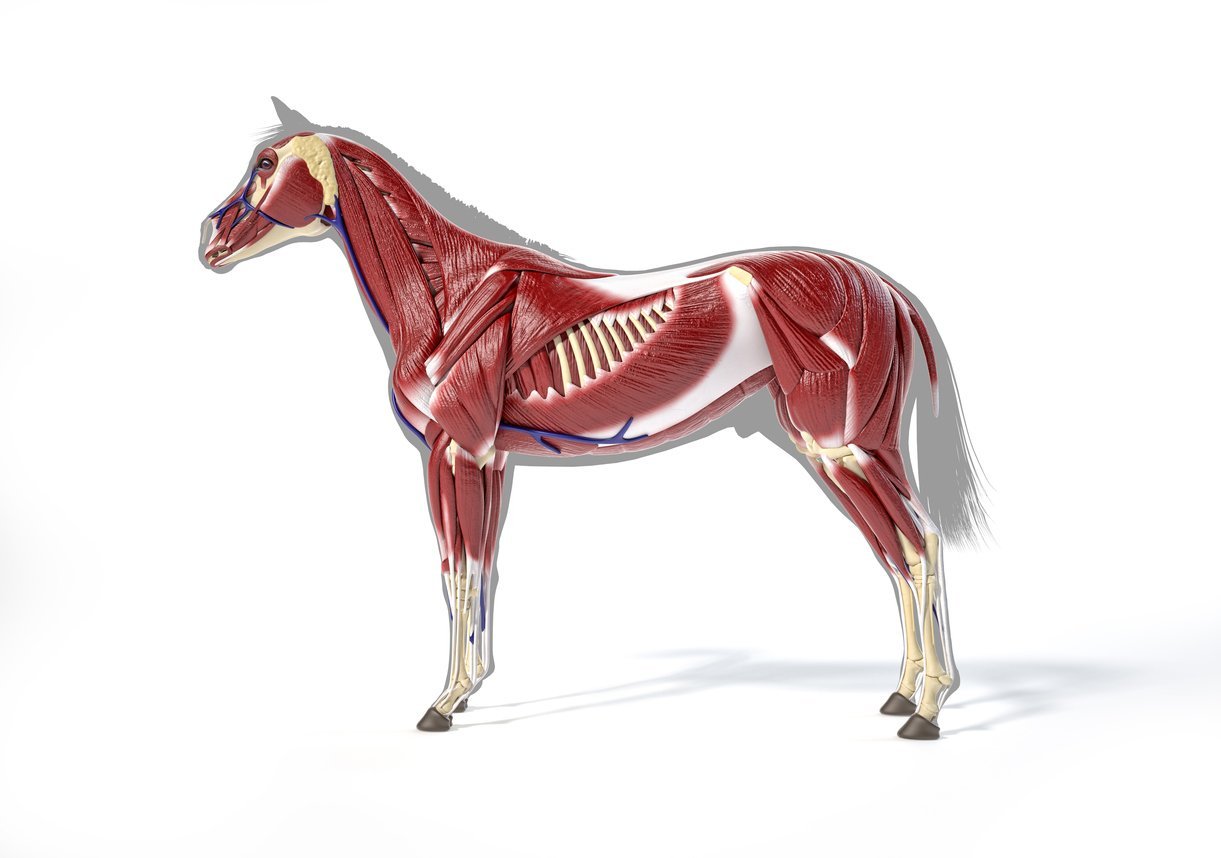
Complete Guide on Horse Muscle [Domestic & Sport]
The horse's body possesses approximately 700 muscles that control movement. Skeletal muscles, which attach to bones via tendons, contract or shorten in length in highly coordinated ways to.

Horse Anatomy the Muscles by COOKEcakes on DeviantArt
Back and Torso - Horse Muscle Anatomy The back and torso contain muscles that allow for flexion, extension, and lateral bending. Key muscles are: Longissimus dorsi - extends or flexes the back; allows lateral bending Multifidus - extends the back; supports vertebrae Intercostals - supports the ribcage Rectus abdominis - flexes the torso